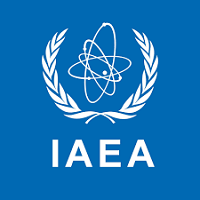Internship – Imagery Science and Analytics
( TAL-SGIM20230303-004 )
Organization: SGIM-State Infrastructure Analysis Section
Primary Location: Austria-Vienna-Vienna-IAEA Headquarters
Job Posting: 2023-03-16, 2:35:00 PM
Contract Type : Interns
Full Competitive Recruitment : No
Are you passionate about imagery science and analytics and eager to apply your skills to real-world challenges in an international organization?
The Safeguards Division of Information Management is seeking an intern with a strong interest in applying modern remote sensing and imagery science techniques to satellite imagery and geospatial information to join our team and contribute to the development of value-added tools for imagery analysts.
Internships
The IAEA accepts a limited number of interns each year. The internships are awarded to persons studying towards a university degree or who have recently received a degree (see Internship web pages for further details).
The purpose of the programme is: To provide interns with the opportunity to gain practical work experience in line with their studies or interests, and expose them to the work of the IAEA and the United Nations as a whole.
To benefit the IAEA’s programmes through the assistance of qualified students specialized in various professional fields.
The duration of an internship is normally not less than three months and not more than one year.
Organizational Setting
The Department of Safeguards carries out the IAEA’s duties and responsibilities as the world’s nuclear inspectorate, supporting global efforts to stop the spread of nuclear weapons. The primary role of the Department is to develop and implement IAEA safeguards to ensure that there is no diversion of declared nuclear material from peaceful activities and no indications of undeclared nuclear material or activities in a State as a whole.
The Department comprises nuclear safeguards inspectors, responsible for carrying out inspections and verifications of all-safeguards relevant information for nuclear facilities in over 180 States; and technical staff responsible for a wide range of activities including: developing concepts and approaches for implementing safeguards; developing and maintaining safeguards equipment; providing analytical and laboratory services for sample analysis; collecting, evaluating and analysing safeguards-relevant information; providing information and communication technology infrastructure and services; and providing programme coordination support.
The Division of Information Management (SGIM) implements state of the art methodologies and techniques for the collection, processing and analysis of a range of safeguards-relevant information, including declarations submitted by States, evaluations resulting from the analysis of samples or measurements collected during infield activities, and information from open sources, including nuclear trade-related data and satellite imagery. Staff perform data validation and complex information analysis and evaluation to support infield activities and provide key input to the State evaluation process.
Main Purpose
As an imagery science and analytics intern, you will have the opportunity to work alongside experienced imagery analysts and investigate applications of open source imagery, such as Sentinel, and open-source geospatial information, such as OpenStreetMap, for the creation of analytical tools, including for landcover classification, building and road detection or segmentation, multispectral information extraction, visualization, and change detection.
Functions / Key Results Expected
As an intern within the SGIM State Infrastructure Analysis Section, you will support the enhancement of analytical capabilities for satellite imagery and geospatial data and be provided with a high level of professional development. Your tasks will include the following:
- Building rapid prototypes and Proof of Concepts (PoC) to determine fit and usability.
- Interacting with business users to define the scope and analytics business case.
- Developing and applying technologies such as machine-learning and deep-learning algorithms to enable imagery and geospatial analytics product functionality.
- Identifying suitable open-source imagery and geospatial data sources and implementing related data collection, cleaning, pre-processing, and labelling processes.
Qualifications and Experience
- University studies in mathematics, statistics, remote sensing, or a data science related field.
- Demonstrated skills in Python programming for satellite imagery, image processing, and geospatial data processing and analytics.
- Demonstrated knowledge of remote sensing algorithm development tools such as Python remote sensing and image processing packages, QGIS, GDAL, and ENVI through written scripts for analysis and reporting.
- Experience in machine-learning methodologies for images and satellite imagery (e.g. supervised and unsupervised learning, deep learning etc.).
- Excellent written and spoken command of English.
Applicant Eligibility
- Candidates must be a minimum of 20 years of age and have completed at least three years of full-time studies at a university or equivalent institution towards the completion of a first degree.
- Candidates may apply up to one year after the completion of a bachelor’s, master’s or doctorate degree.
- Candidates must not have previously participated in the IAEA’s internship programme.
- Good written and spoken English essential; fluency in any other IAEA official language (Arabic, Chinese, French, Spanish or Russian) an asset.
- Candidates must attach two signed letters of recommendation to their application.
